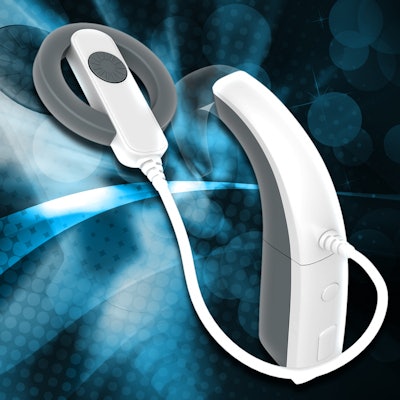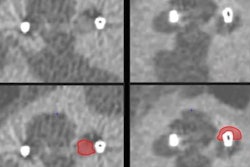
An individualized CT-guided approach to programming cochlear implants significantly improved pitch perception in people with deafness or severe hearing deficiencies, compared with the standard technique, according to an article published online November 21 in JAMA Otolaryngology -- Head and Neck Surgery.
Though cochlear implants do not restore hearing, they can help individuals with major hearing loss recognize a representation of sounds in the environment and use these sounds to understand speech.
Each cochlear implant relies on a collection of electrodes inserted deep within the ear to stimulate the auditory nerve with frequencies that are based on a universal default pitch map. A significant deficiency with these devices is that the pitch maps are often imprecise and generate out-of-tune frequencies, noted senior author Dr. Charles Limb and colleagues from the University of California, San Francisco.
"If provided with a more accurate place-pitch map on device activation, cochlear implant users may not be required to overcome their expectations regarding perceptual sounds ... and, as a result, [may] achieve maximum perceptual benefit at a much quicker rate," they wrote.
To help minimize cochlear implants' issues with pitch, Limb and colleagues developed a method for creating personalized frequency pitch maps for 17 individuals with severe hearing loss who underwent a flat-panel CT exam. The researchers turned to flat-panel CT instead of conventional CT for its high spatial resolution and improved visualization of the inner ear bones and electrodes.
The researchers' imaging-based method involved determining the spatial relationship between hair cells and nerve cells in the inner ear on flat-panel CT scans -- ultimately allowing them to calculate the ideal frequency setting for distinct electrode channels in each person.
Wearing cochlear implants programmed with CT-guided pitch maps allowed a greater number of individuals to distinguish different pitches accurately than when wearing implants programmed with standard pitch maps. The CT-guided pitch maps were also associated with a median of four fewer errors on a pitch-scaling test covering approximately 12 electrode channels, compared with standard pitch maps.
| Flat-panel CT vs. standard pitch map on auditory testing for cochlear implant users | ||
| Users with an improved score | Standard clinical pitch map | Flat-panel CT pitch map |
| For identifying pitch | 29.41% | 70.59% |
| For recognizing monosyllabic words | 37.5% | 50% |
| For recognizing speech in noise | 56.25% | 43.75% |
| For recognizing vowels* | 56.25% | 31.25% |
Furthermore, the improvement in pitch discernment with CT-guided pitch maps did not come at the cost of impairments to speech perception or word recognition, although the individuals' capacity to recognize vowels did fall by a statistically significant degree.
"Speech perception was conserved and benefits in pitch performance were observed despite the short acclimation period," the authors wrote.
"We cautiously suggest that an image-guided place-pitch map may provide a cochlear implant user with a more accurate representation of relative pitch intervals," they concluded.




















